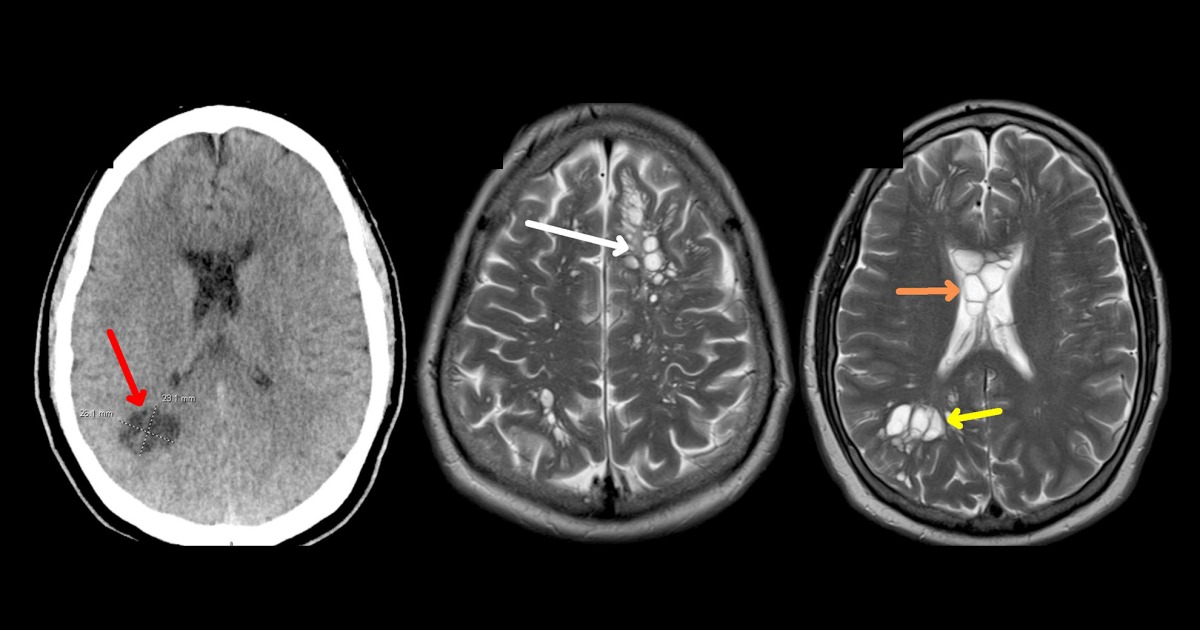A man was hospitalized with worsening migraines only to find out they were caused by parasitic tapeworm larvae in his brain — and researchers believe he was infected by eating undercooked bacon.
The unidentified 52-year-old American man consulted doctors about changes in his usual migraines over four months, according to a study in the American Journal of Case Reports published Thursday. The migraines became more frequent, severe and unresponsive to medication.
The patient was admitted to the hospital for testing. CT scans revealed numerous cystic foci, which are fluid-filled sacs in the brain. Cysticercosis cyst antibody tests returned positive, and the man was diagnosed with neurocysticercosis, the study said.



I don’t understand these flaccid bacon people. Crispy bacon is clearly superior.
Not flaccid, I want crispy edges but goddamn, bacon you can sit and chew for awhile is amazing. Burnt/“crispy” bacon just crumbles and, in my possibly tapeworm adled brain, deprives you of sweet bacony goodness.
Exactly. Crispy edges for that maillard flavor, but still chewy means the fat coats your mouth and leaves that long lasting savory bacon flavor even after a sip of coffee.
Crispy might as well be eating a bottle of bacon bits. It’s just disappointing dry dust with a flavor that disappears almost immediately.
My mouth started watering at fat coats your mouth lol
I like to cook it in the oven for extra crispiness. Also, candied bacon is amazing.
Try rendering bits & ends with balsamic vinegar; slowly and never letting it scorch, and you’ll have yourself some of the best gawdamn candy there is. 🤘🏽
Hate to be an idiot, but do you have a recipe? Specific steps? Never having bought burnt end, much less cooked them and don’t know what rendering means or what proportions
Not an idiot, and that’s totally fine to ask, certainly! Rendering is to draw fat from a mass of meat over low heat. Also, “bits & ends” are simply off-cuts or odd shaped pieces leftover from the slicing of bacon for sale, and should be available for a discounted price —whereas “burnt ends” are a finished bbq product and not an ingredient, per se.
The prep for this is pretty simple really, and once you do it yourself, it should make more sense as to how it all works.
Begin with a sauce pot or large skillet that you have a lid for (you’ll want to partially cover it during cooking to minimize spatter) over Medium to Medium-High heat and a decent handful of bacon bits & ends (=/< 2 lbs). Partially cover with said lid to keep the mess to a minimum, but don’t fully cover it or you’ll change the cooking process to problematic. (internal heat capture, moisture retention, etc.) Stir the pieces during this step to make sure all are cooking evenly.
As the fat begins to pool and the bacon solids are warmed through, gently pour off and reserve the oil before returning the solids and pot/pan to the heat. You can use a metal sieve for this step, to filter the oil quickly and cleanly, but don’t press/squeeze the bacon to force out more oil if so.
At the minimum, the solids need to come back up to a similar temp as before the pour-off, though I like to take them a bit further for some crispy edges. While this is working (mostly covered, to keep the grease specks from flying all over your stovetop), measure out a volume of balsamic vinegar that will be able to just coat the solids and then some. IIRC, this should be about a third (<½) of the current volume of solids in the pot/pan.
Once the bacon solids are at your preferred warmth/crispiness, stir in the balsamic. (Pouring it into the center will help minimize spatter, but there will be an initial steam cloud, so watch out when you’re stirring it all together — steam burns are no joke.) After each piece is saturated, reduce the heat to a Low/Medium-Low and return the lid to partially cover, stirring occasionally.
The process is finished when the balsamic is reduced to a thick glaze and the bacon pieces are coated without being sticky/stringy. You can either lay them out on a Silpat baking sheet or parchment paper to cool, or add them straight away to a tossed salad of arugula, fresh diced tomatoes, and parmesan with a citrusy dressing paired with chicken or fish, for example. It freezes well, and can be used later in all sorts of ways, including a quick treat while thinking about what you want to cook that day. 🤗
Oh, and the oil you reserved in the beginning can be added to your cooking as you see fit. Cutting it into oil amounts for flavor or simply in place of butter, at times. Coupled with roasted garlic and cracked pepper on crusty bread, it makes a hearty split pea soup really sing! ✨
Have fun!
Thanks for plenty of detail! Ill have to give it a try
deleted by creator
Mett Brötchen 🤤 as a German I disagree.
Crispy bacon on sandwiches and floppy bacon for breakfast. This is the way.